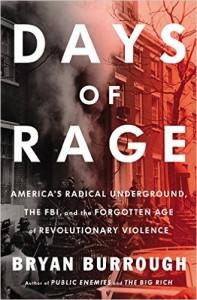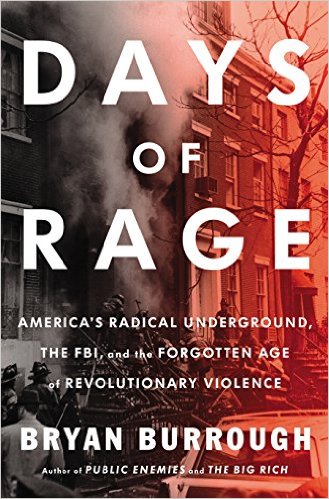I’m an avid reader. I will literally finish one book and pick up another. And, more often than not, it’s a book about history. So reading a book like “Days of Rage” is not unusual for me.
What is unusual is a book that continues to make me think about it months after I’ve finished it. “Days of Rage” has done that.
 It’s hard to believe 40 years later that there once was a revolutionary underground in the United States. Some radical leftists, unsatisfied with the pace of social and legal changes in the 1960s, decided to resort to violence in an effort to spark a revolution to overthrow the establishment structure. To that end, they bombed public places, including the U.S. Capitol and the Pentagon, robbed banks, and killed police officers all across the country.
It’s hard to believe 40 years later that there once was a revolutionary underground in the United States. Some radical leftists, unsatisfied with the pace of social and legal changes in the 1960s, decided to resort to violence in an effort to spark a revolution to overthrow the establishment structure. To that end, they bombed public places, including the U.S. Capitol and the Pentagon, robbed banks, and killed police officers all across the country.
Groups like the Weather Underground, the Black Liberation Army (which may or may not have actually existed), the Symbionese Liberation Army, which kidnapped and brainwashed Patty Hearst, the FALN, and others became a prime focus of law enforcement, particularly the FBI.
“Days of Rage” uses extensive interviews with surviving members of underground organizations, court records, and FBI files to paint a thorough and engaging picture of the 1970s radical underground. It is, perhaps, the most extensive documentation of a period in American history that simply has not been explored and has been largely forgotten by most Americans.
Today, the surviving radicals interviewed look back and wonder how they could have been so delusional to believe that they could inspire a revolution through their actions. Once the war in Vietnam ended and the Nixon administration collapsed in the wake of Watergate, any revolutionary zeal that existed in the United States vanished into the mist. In fact, one of the great ironies of history is that their efforts to inspire a leftist revolution helped set the stage for the conservative movement of the 1980s as many Americans, appalled at what they saw as the excesses of the 1970s, flocked to the 1980 Reagan campaign.
In the end, most of these organizations were either wiped out by law enforcement or, in the case of most of the Weather Underground, surrendered to authorities by decade’s end. The leaders of Weather faced few serious charges when they surrendered though. Their crimes had all been against property and had not injured or killed anyone (apart from some Weather members who were killed in an accidental detonation in their workshop) and much of the evidence against them had been obtained illegally and was not admissible in court. Today, many of the leaders of Weather live normal lives all across the country.
It’s not a perfect book. As it reaches the end of the 1970s, it begins to run out of steam, just as the radical underground leftist movement itself was crumbling away. Stories of johnny-come-latelys to the movement are simply not as compelling as the stories from the early 1970s.
But, overall, it is a fascinating read. And one that anyone interested in history or politics will quickly devour.


